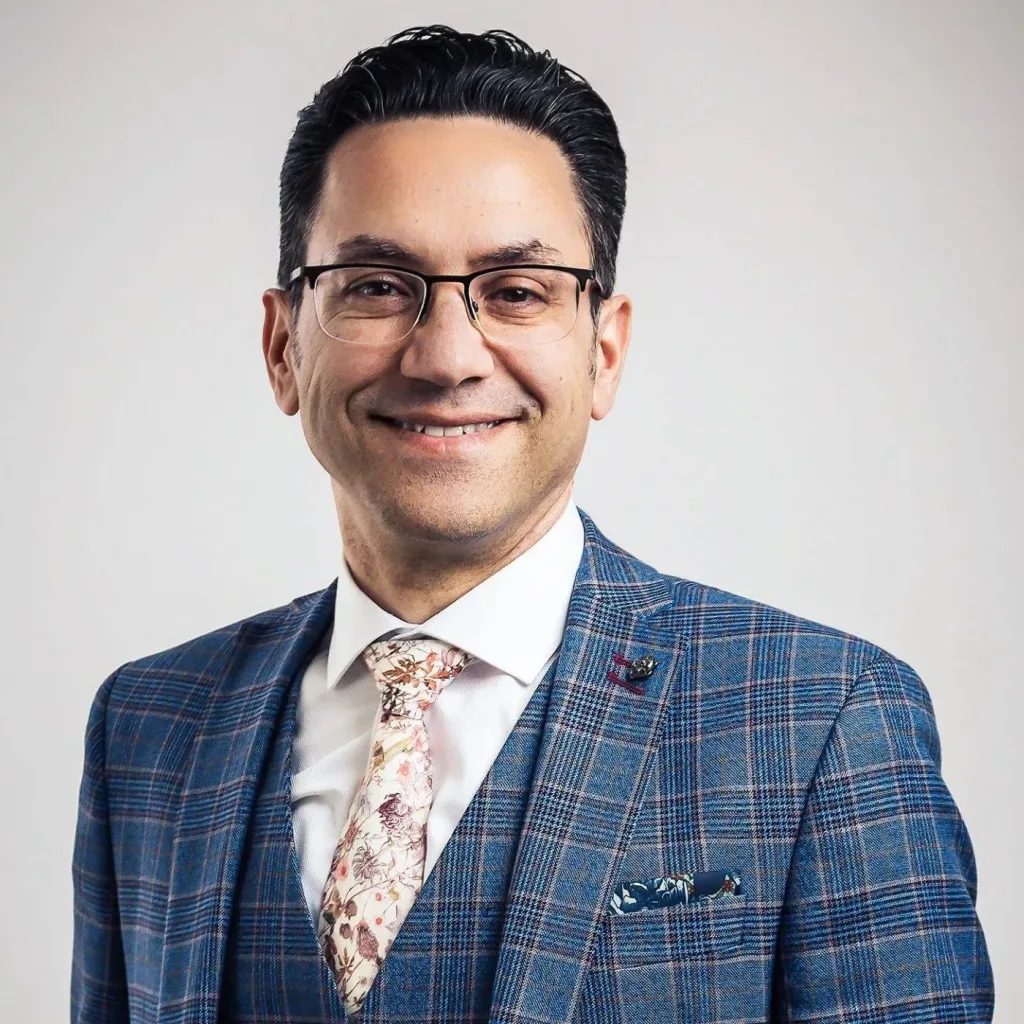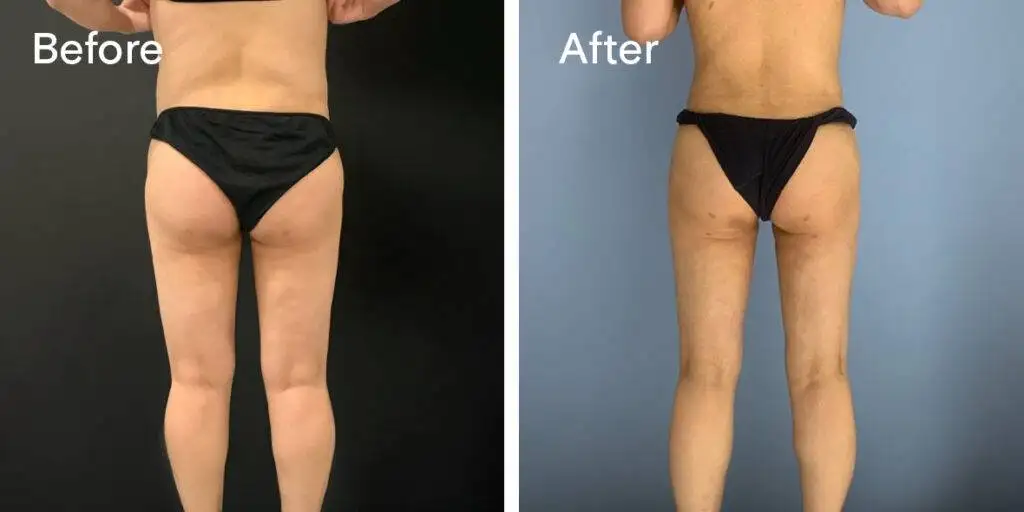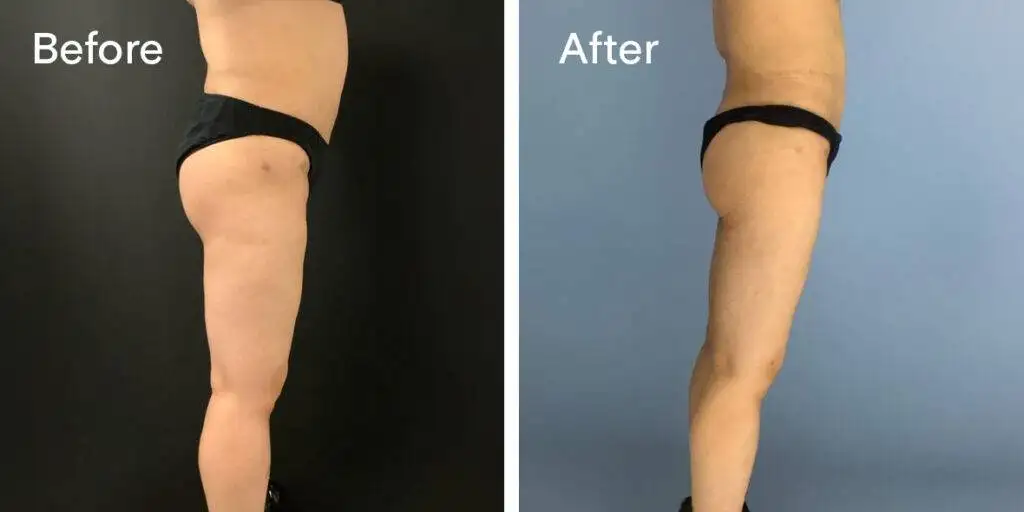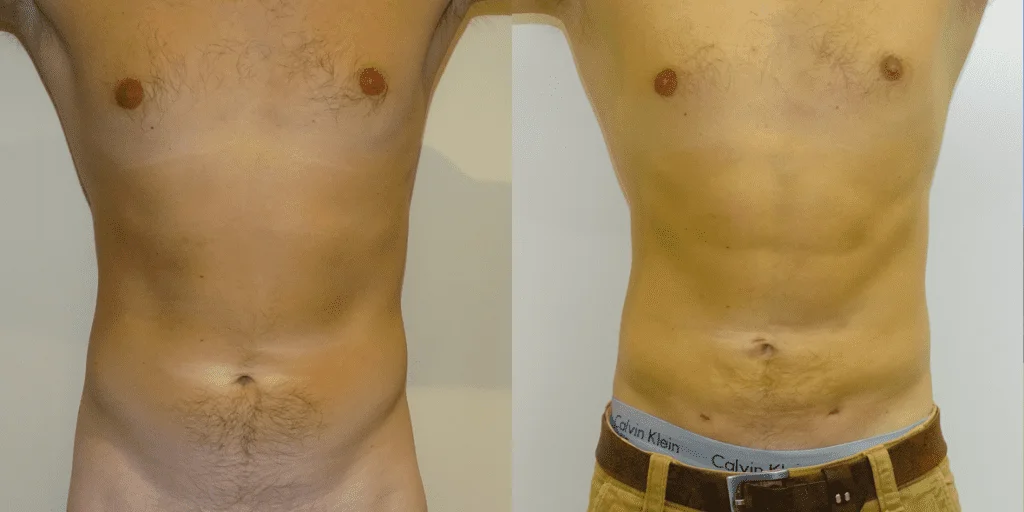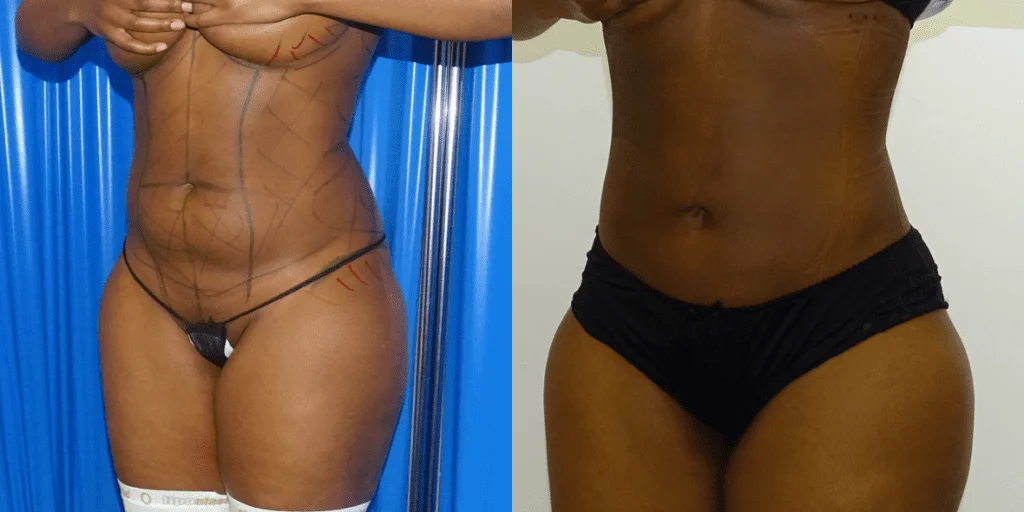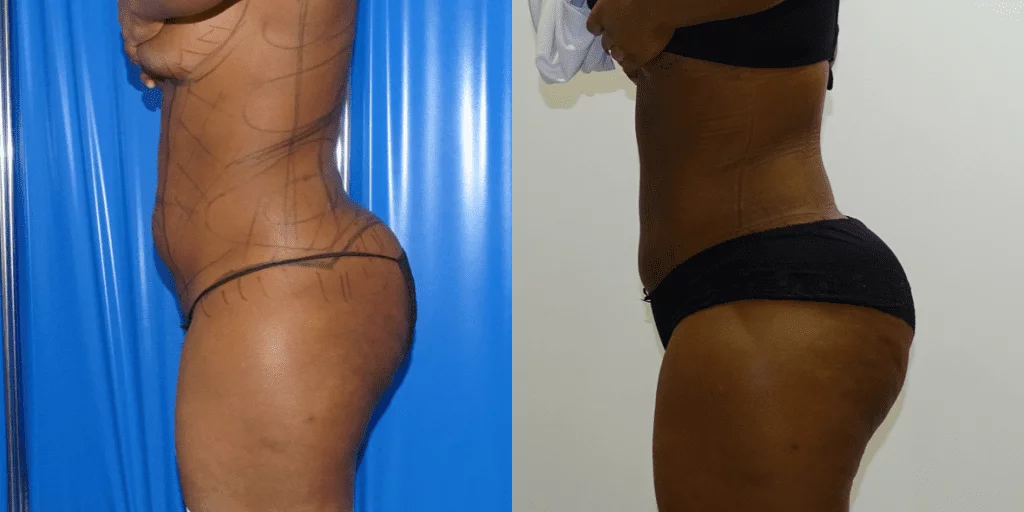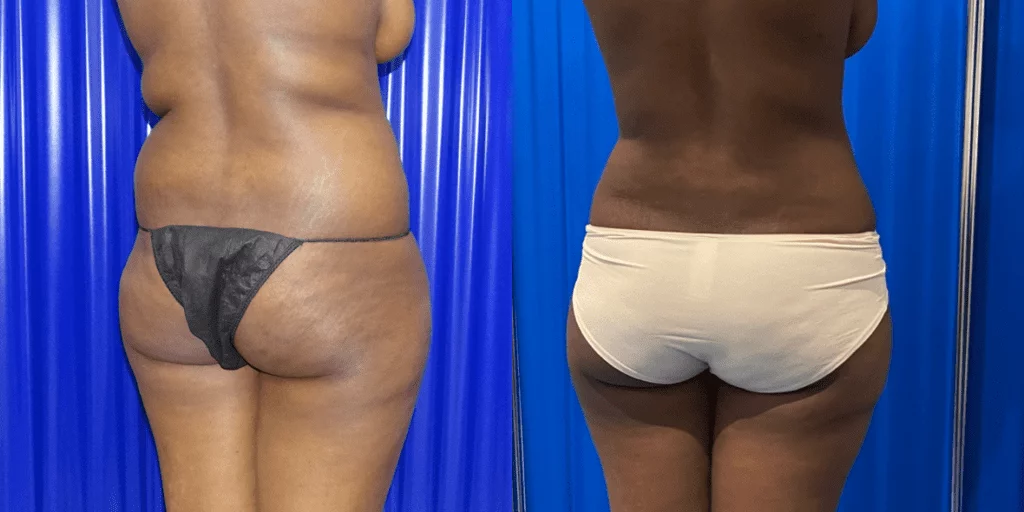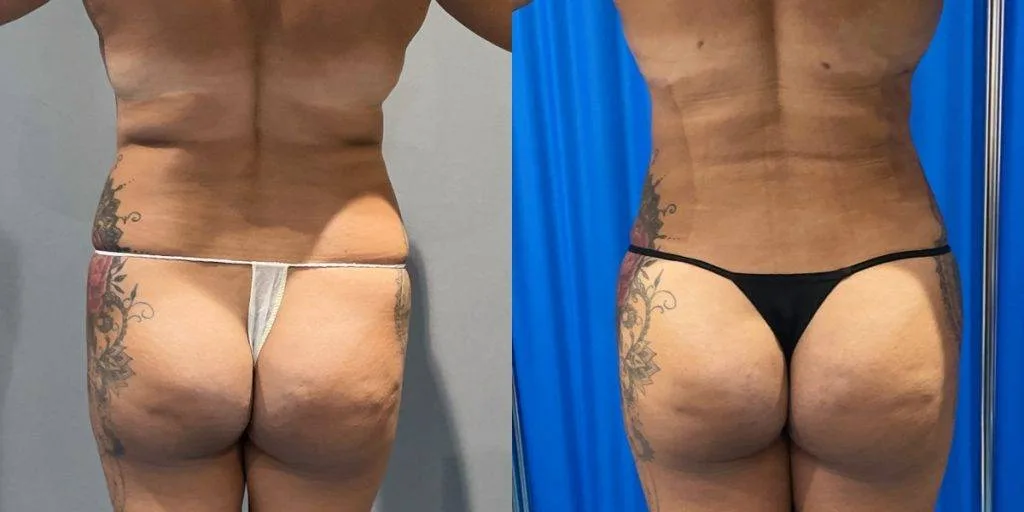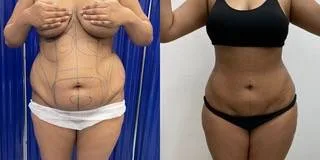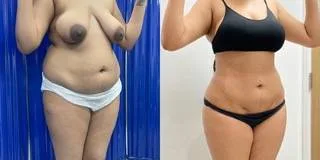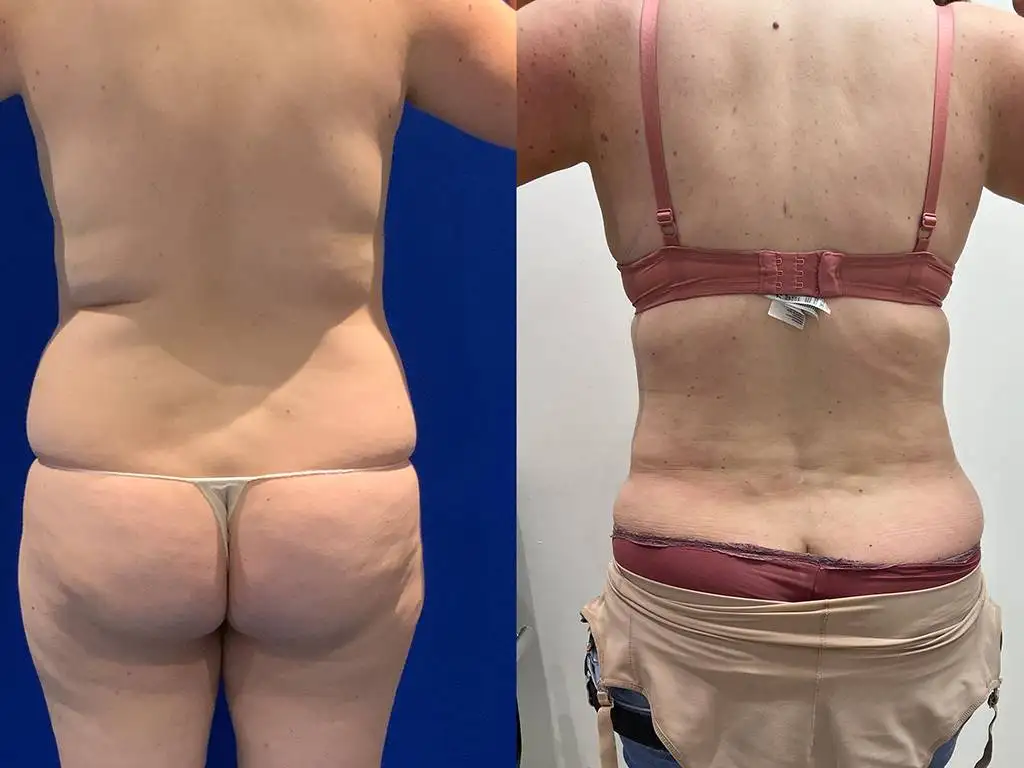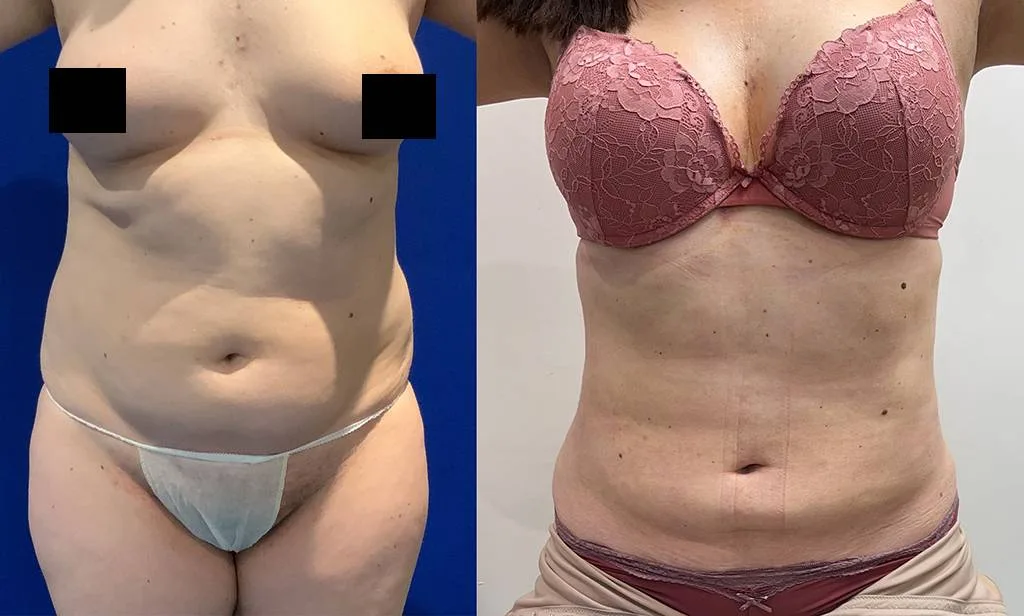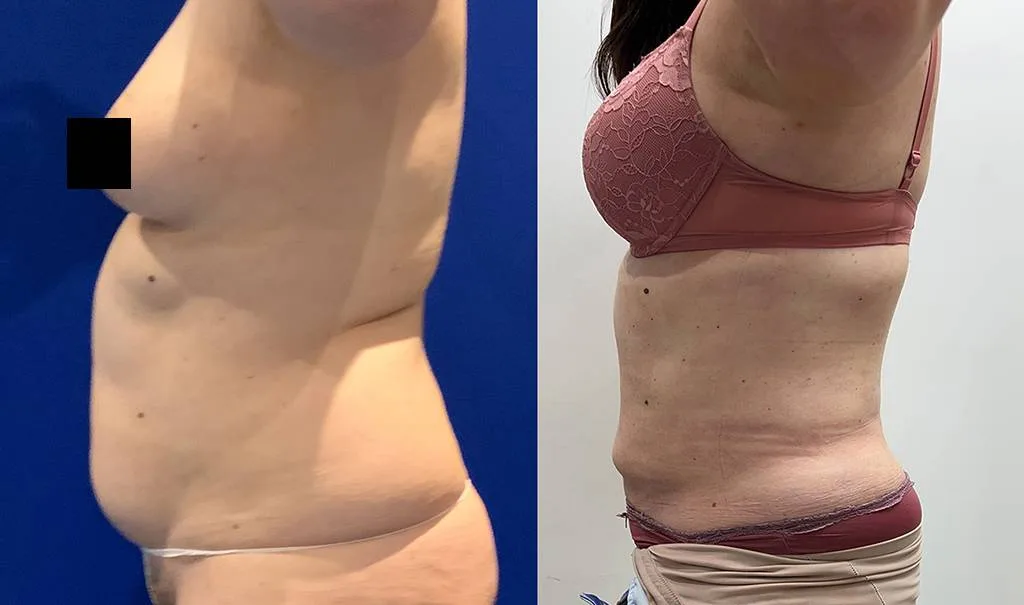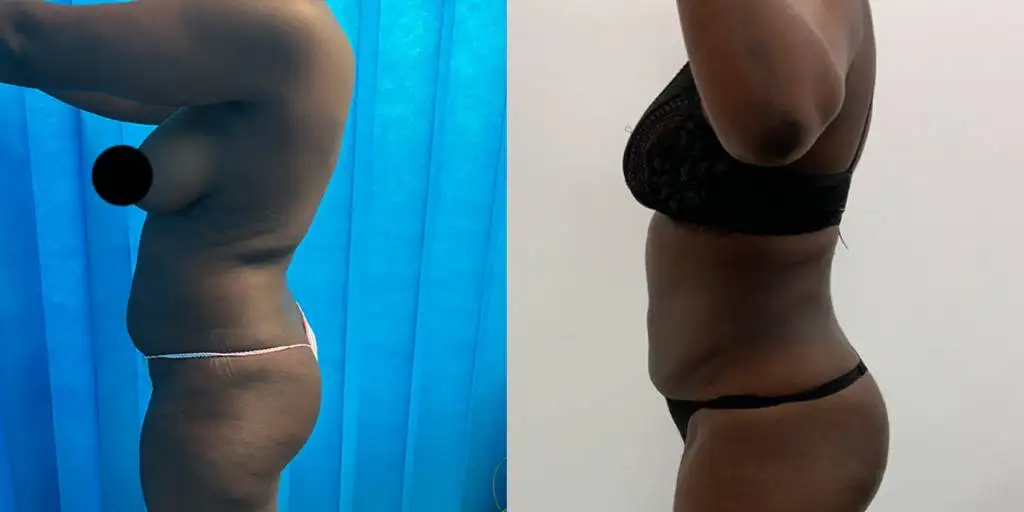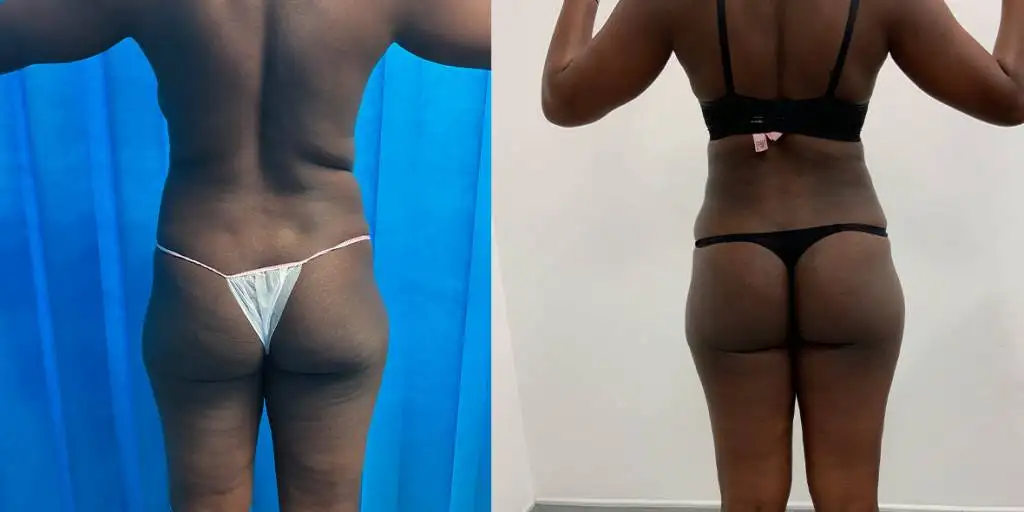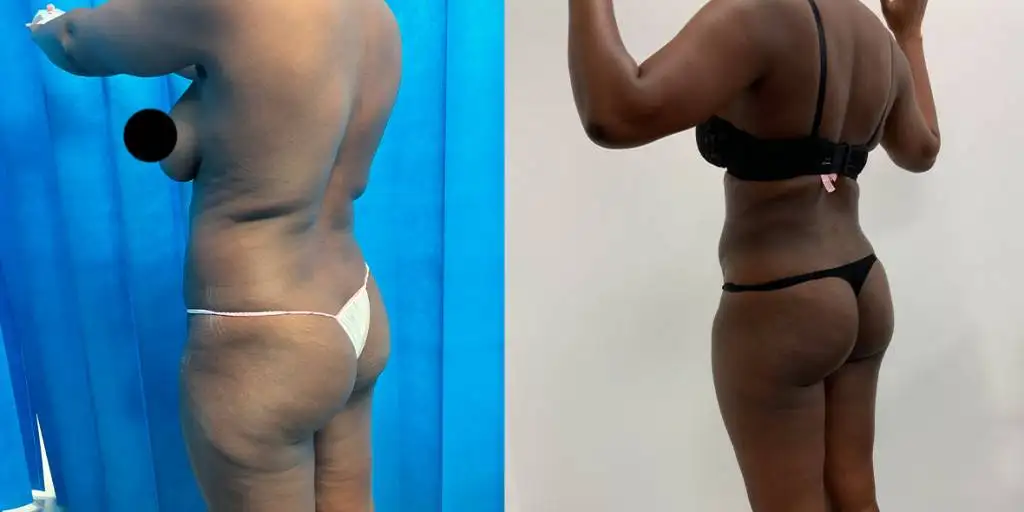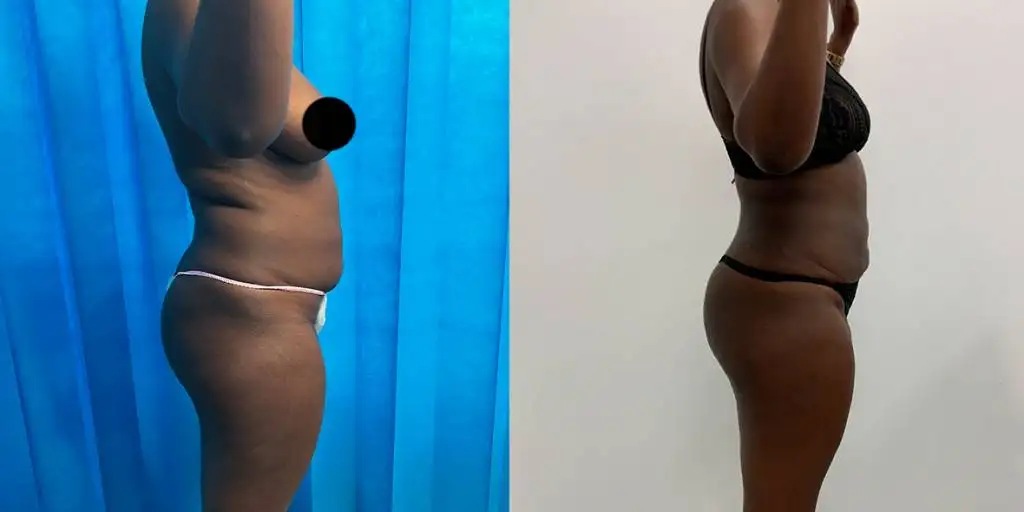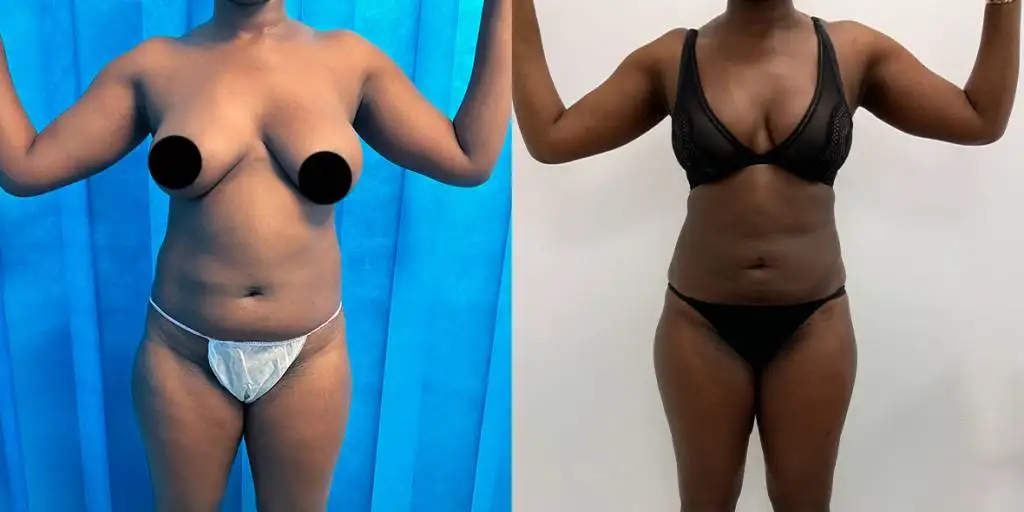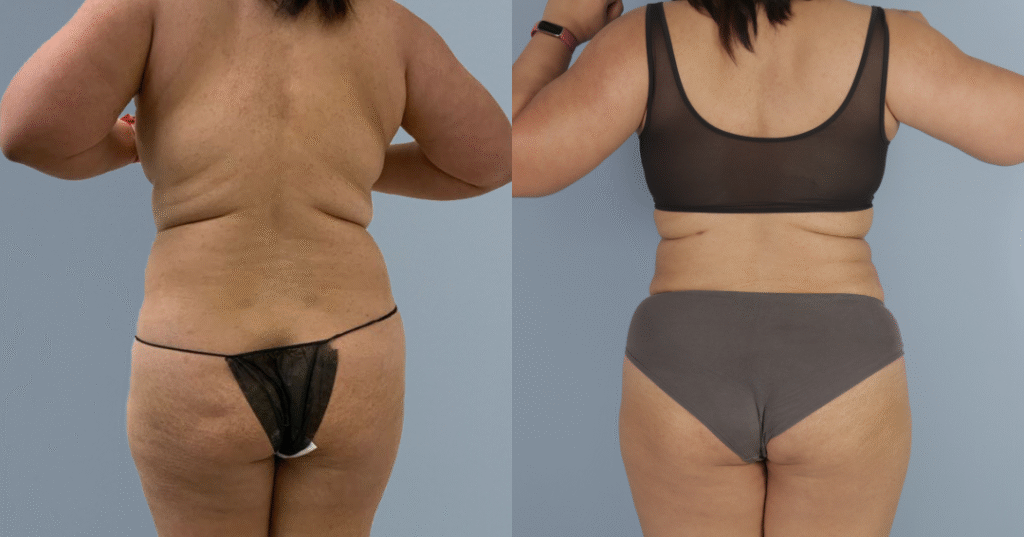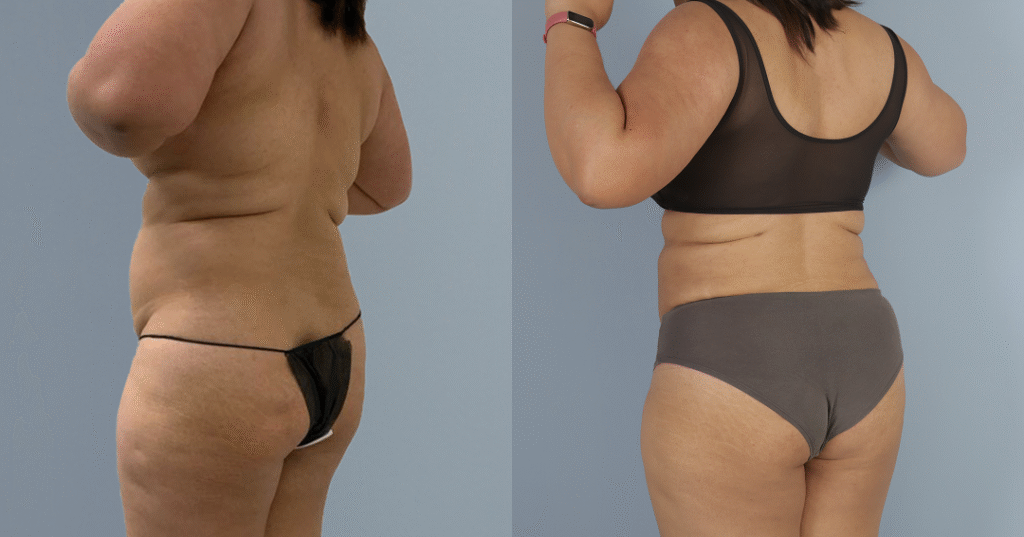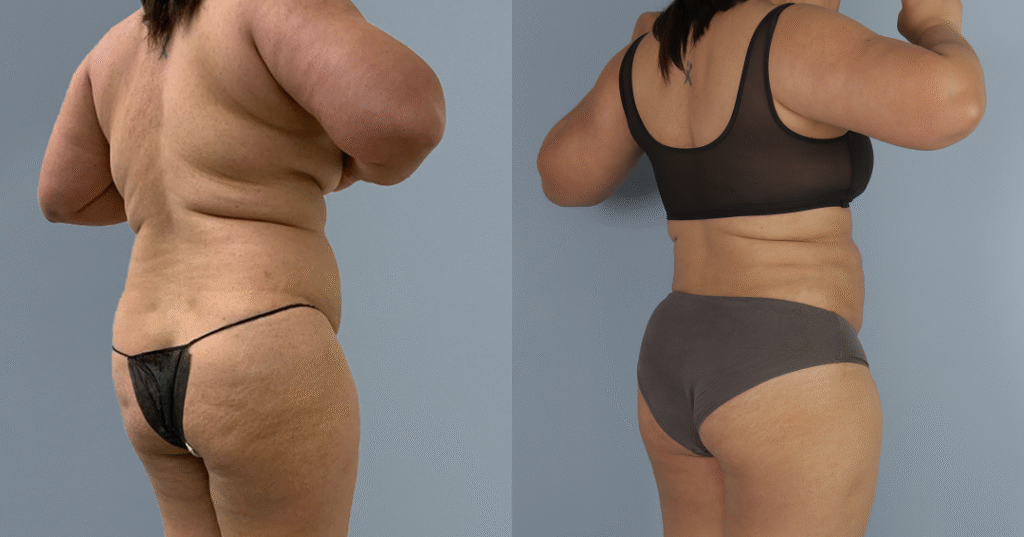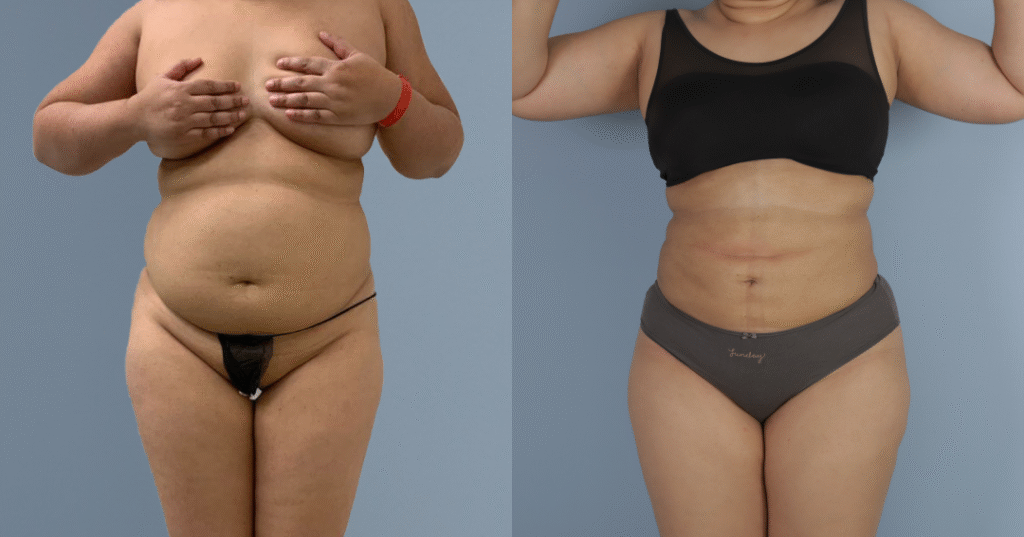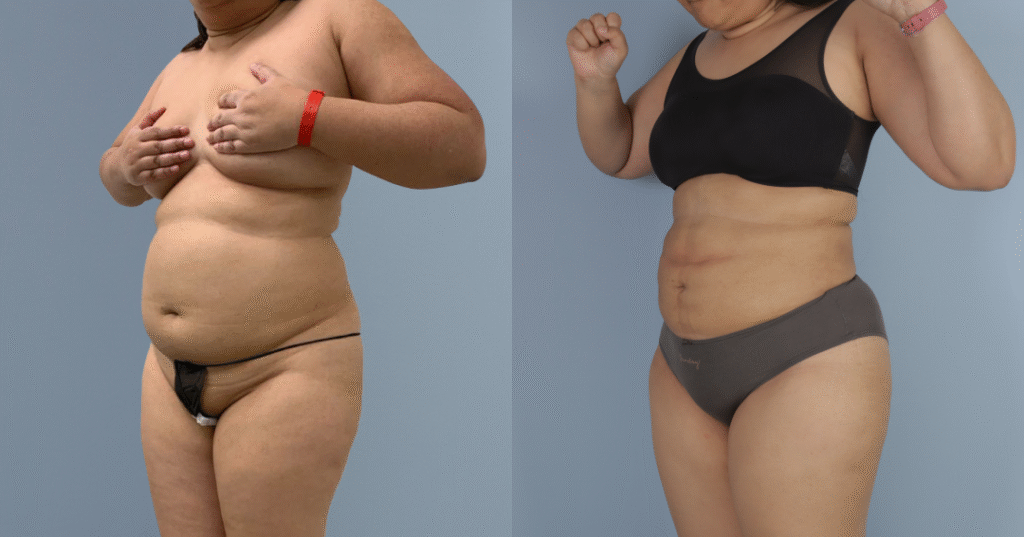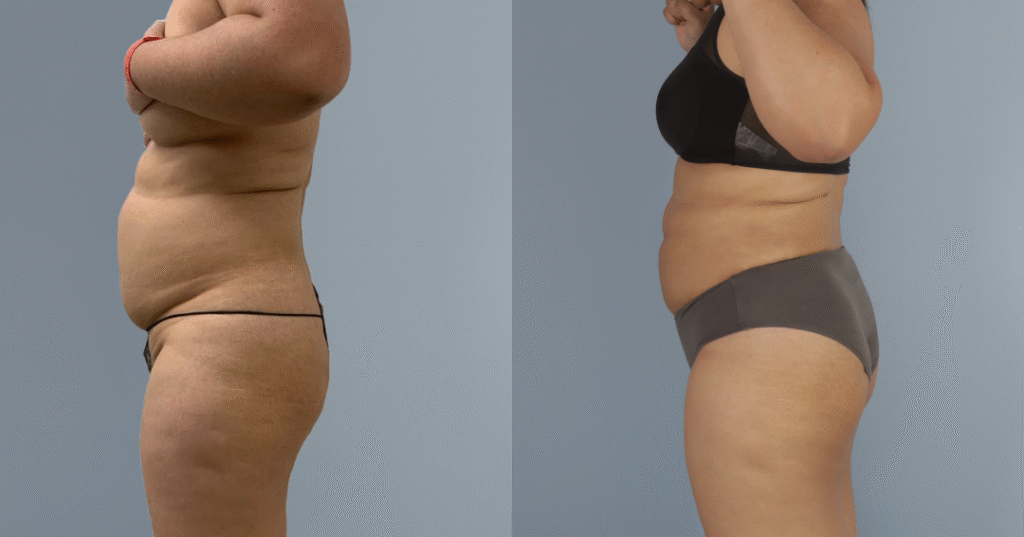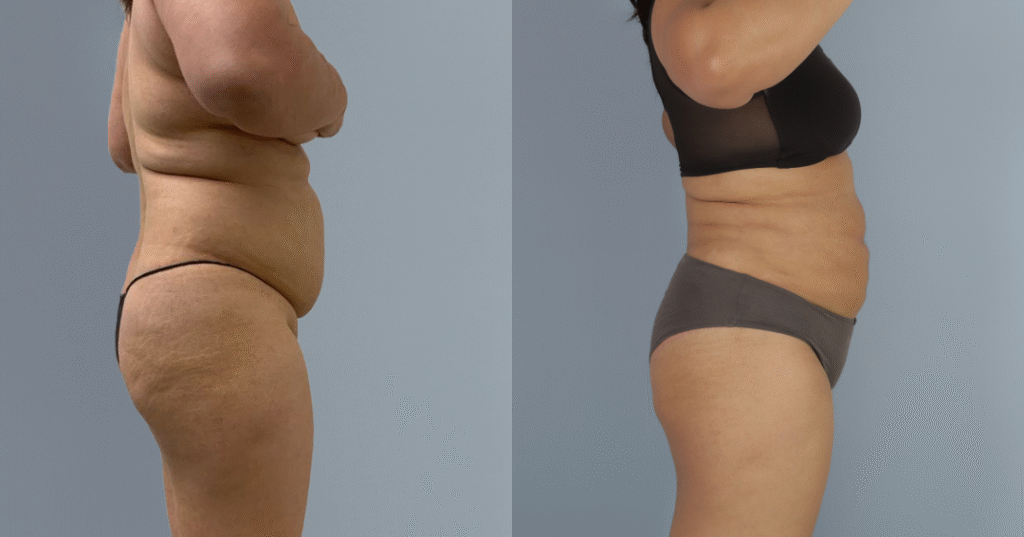You’re so close to the body you want, but those last few stubborn fat deposits won’t budge. With liposuction in London, Dr. Omar Tillo will remove excess fat to sculpt and define your figure, giving you the slimmer silhouette you’ve been working toward.
As one of the UK’s top body contouring specialists, Dr. Tillo has completed more than 4,500 transformations for patients like you. He uses precise Vaser (ultrasound-assisted liposuction), PAL (Power Assisted Liposuction), and BodyTite (radiofrequency assisted liposuction) to help you achieve your aesthetic goals.
The body you’ve always wanted is within reach. Contact the CREO Clinic today to book a consultation with Dr. Tillo.
What is Liposuction?
Liposuction, or suction-assisted lipectomy, permanently removes excess fat deposits to sculpt and define targeted areas of the body. By targeting stubborn fat cells in areas like the abdomen, hips, flanks, thighs and knees that are resistant to diet and exercise, this procedure creates a more defined silhouette.
Liposuction can be used as a stand alone treatment, or combined with other surgical procedures for a more complete transformation. Dr. Tillo often performs liposuction alongside a tummy tuck, gynecomastia surgery, an arm, or thigh lift. Liposuction is also included in our mummy makeover package to restore the pre-pregnancy figure.
Quick Liposuction Overview
Treatments
1Results
12 WeeksAnesthesia
Sedation or General AnaesthesiaSurgery Time
1-3 HoursHospital Time
3-6 HoursMobility
24 HoursWashing
ImmediateOff-Work
7 DaysExercise
2 WeeksFull Recovery
12 WeeksLiposuction Before and After Photos
Why Do People Choose Liposuction?
Liposuction is chosen by many patients as it provides a number of unique benefits:
- Liposuction can be used to sculpt multiple areas of the body by permanently removing excess fat deposits.
- Liposuction can target stubborn pockets of fat cells that have been resistant to diet and exercise alone.
- Liposuction surgery only requires small incisions, meaning that the resultant scarring from the procedure is minimal.
- Through removing excess fat, patients can feel more confident wearing form-fitting clothing and engaging in exercise.
Who is a Candidate for Liposuction?
Your suitability for liposuction surgery will be assessed during consultation with Dr. Tillo, who will perform a comprehensive evaluation of your needs.
In general, patients are good candidates for liposuction if they:
- Have stubborn pockets of fat cells that they wish to permanently remove
- Are in good physical and psychological health
- Are at their ideal weight, with a BMI no greater than 35. You can ensure your eligibility by using our handy BMI calculator
- Have realistic expectations about the results that liposuction can provide
Liposuction for Women
Liposuction is a popular procedure among women as it can help to restore a sought after feminine form by removing fat cells across common areas of concern and creating a desirable, enhanced figure. Although lipo can be performed across the body, the parts of the body often targeted for female patients include:
- The hips and waist – helping to create a highly sought after hourglass figure by removing ‘love handles’
- Thighs – toning the lower body by removing ‘saddlebags’
- Abdomen – reducing the appearance of a ‘muffin top’ by targeting fat deposits around the tummy
- Back – reduces stubborn rolls of fat cells around the bra line, lower back and back of the neck (buffalo hump)
- Arms – can be completed alone or with brachioplasty to treat more extensive “bingo wings”
- Chin – helps to tone the shape of the face for a slimmer, more feminine form
Liposuction for Men
Liposuction surgery can enhance the masculine form by removing stubborn fat and enhancing the tone and definition of targeted areas. Common treatment areas for men include: –
- Chest – to create a highly desirable masculine, ‘chiselled’ chest
- Abdomen – HD Lipo can be used to carefully remove fat close to the abdominal muscles (abdominal etching), enhancing the definition of the muscle curvatures

What Types of Liposuction Does CREO Clinic Offer?
Dr. Tillo has the skills and experience to utilise a range of liposuction surgery technologies depending on a patients unique aesthetic needs, including:
Power Assisted Liposuction (PAL)
Power-assisted liposuction, or PAL, uses motorised cannulas that move in different directions, vibrating to help to release the fat, after which the suction completes the fat removal.
This method of liposuction — not to be confused with laser assisted liposuction — is preferred due to its effectiveness at removing fat while being less labour-intensive for the surgeon. PAL can be a great option for patients who have larger quantities of fat to remove or for those who have undergone liposuction previously. In addition, PAL is best in cases of fat transfer as the damage done to the harvested fat cells is minimal.
Radiofrequency Assisted Liposuction (BodyTite)
BodyTite is a minimally invasive type of liposuction that harnesses radiofrequency to break up fat and tighten the skin simultaneously. Due to its advanced technological ability to target both stubborn fat and lax skin, it is a highly effective body contouring procedure without significant downtime.
Ultrasound Assisted Liposuction (Vaser)
Vaser liposuction performs fat removal closer to the muscle than other liposuction methods by utilising sound energy to break fat apart. This means that the targeted areas can be treated with greater precision and finer contouring. Vaser is an ideal option for smaller areas of the body, such as the back of the arms. Vaser also requires less downtime thanks to its less invasive nature, and can be performed under local anaesthetic in some cases.
What Areas Can Liposuction Treat?
Our cosmetic surgeon performs liposuction fat removal on targeted areas of the body, such as:
- Upper and lower abdomen
- Flanks
- Upper and lower back
- Upper Arms
- Thighs (inner, outer, anterior, or posterior)
- Breasts
- Calves and ankles
- Buffalo hump (excess fat behind the shoulders and neck)
- Knees
Read Our Liposuction Reviews on RealSelf
How Much Does Liposuction Cost?
The exact cost of a liposuction varies depending on the size of the areas being treated and the individual characteristics of each patient.
| Starting From | Deposit | 12 months (0% APR) | 30 months (12.9% APR) | 60 months (12.9% APR) | |
| 1 area | £5,900 | £1,500 | £366 | £172 | £99 |
| 2 area | £6,900 | £1,500 | £450 | £212 | £130 |
| 3 areas | £8,250 | £1,500 | £562 | £264 | £152 |
| 4 areas | £9,250 | £1,500 | £645 | £303 | £175 |
Included in the above price is the surgeon and anaesthetic fees, hospital and theatre fees, compression garments and up to three follow-up appointments to monitor your progress after surgery. Patients should expect to pay an additional fee for any medical tests, scans, prescribed drugs, lymphatic drainage massages or the use of concierge services.
At the CREO Clinic, we also offer a range of financing options with our partners at Chrysalis Finance for patients wishing to spread the cost of their treatment.
What to Expect
The Consultation
During your initial consultation with Dr. Tillo, you can expect to discuss your medical history to identify any health issues that may affect your eligibility for liposuction. Dr. Tillo will ask you about the areas you wish to target and the best method of liposuction fat removal according to your needs.
You will also be asked about your honest expectations regarding liposuction and the realistic results the procedure can achieve so that you remain informed at all times.
Preparing for Liposuction
Prior to your liposuction procedure, you will need to take several preparations:
- BMI – You will need to ensure your BMI remains stable and at a safe level for surgery (under 35).
- Smoking – You will also need to abstain from smoking nicotine (including vaping, patches) four weeks prior to and after your liposuction to reduce the risk of complications.
- Alcohol – You should reduce your alcohol intake prior to surgery as this can delay your recovery.
- Prepare your home for recovery – Make sure your home is comfortable for your return, and that you have support for chores and caring for children and pets.
The Procedure
First, Dr. Tillo will mark the areas of the body where the fat removal will occur. Our anaesthetist will then administer the required anaesthetic and/or sedative to ensure your comfort during surgery.
To begin the procedure, a suction cannula is inserted into the targeted area via a small incision. The liposuction device then breaks up and removes the required amount of fat. Finally, Dr. Tillo will close the incisions using dissolvable sutures.
Recovery & Aftercare
The recovery process is different for each patient and is dependent on the nature of your procedure. Your surgeon will provide detailed aftercare instructions and prescribe pain medication to make your recovery as comfortable as possible. Furthermore, you will receive a fitted compression garment that eases swelling and further contours the treated area.
You may experience swelling, bruising, and slight numbness in the affected area that will gradually dissipate in a few days. You should feel able to return to light and office work after this period. You can resume your full daily routine, including strenuous exercise, 2-3 weeks after liposuction. However, you should continue to wear your compression garments for six weeks to minimise any swelling.
Risks of Liposuction
Liposuction is generally considered to be a safe procedure, and complications are rare. Choosing a suitably experienced and skilled surgeon, like Dr. Tillo, can further help to minimise risk.
However, like any surgical procedure, liposuction fat removal does carry a degree of risk that you should be aware of, such as:
- Anaesthetic reactions
- Infection at incision sites
- Wound infections or poor wound healing
- Asymmetry of the treatment area
- Skin surface irregularities
- Cellulite
- Skin laxity and sagging
What Results Can You Expect?
Liposuction immediately removes excess fat in the area, but the results only become visible when the side effects of the surgery dissipate. Therefore, it may take between 6-12 weeks for the final results of your surgery to become visible. By this time, you will notice that the treated area is slimmer and more contoured.
Furthermore, you may notice some skin laxity in the area that usually contracts over time. However, some patients (due to factors such as age and amount of fat removal) may have permanent excess skin in the area. In such cases, your surgeon may recommend a BodyTite treatment for tightening the skin to produce an optimal outcome.
Visualise Your Results in 3D Before Surgery

Why Choose CREO Clinic
The CREO Clinic is a specialist plastic surgery clinic providing bespoke treatment to match each patients equally unique needs. We operate under a core ethos of expertise and transparency to provide the best possible patient-centred care, while delivering exceptional results.
Our body contouring surgeon, Dr. Omar Tillo, only treats the body, meaning you can rest assured that he has honed this specific craft over his illustrious career.
Meet Our Surgeon
Dr. Omar Tillo, the medical director and senior plastic surgeon of the CREO Clinic, is a specialist in cosmetic procedures from the neck down. Through his extensive career, he has mastered a broad range of liposuction technologies to provide bespoke surgical solutions for his patients.
Combined Procedures
Liposuction and Tummy Tuck
A tummy tuck, also known as an abdominoplasty, is a surgery that removes excess fat and skin from the abdomen while tightening the muscles in the area. The procedure produces a flatter and toned stomach while strengthening the patient’s abdominal core. Dr Tillo has perfected this surgical combination by performing it for many years on an almost regular weekly basis.
Combining a liposuction with a tummy tuck delivers a more prominent result, as it enables larger amounts of excess fat to be removed from the upper or lower abdomen or surrounding areas, thus enhancing the contours of the body. Furthermore, undergoing both procedures simultaneously is more cost-effective and convenient for the patient as they can combine the downtime for both surgeries.
Liposuction FAQs
What should I consider when deciding to have liposuction?
Most importantly, you should carefully research where you will have your procedure to ensure a smooth and safe surgery that can deliver exceptional results. Dr. Tillo has a track record of providing outstanding care for his patients, with a long list of positive reviews from successful liposuction surgeries.
How quickly will I see the results from liposuction?
How long will the results from liposuction last?
What kind of anaesthesia is used for liposuction?
Is liposuction surgery painful?
Will I need to stay overnight for liposuction?
Will liposuction scars be noticeable?
What are possible side effects of liposuction?
How much weight can you lose with liposuction?
However, liposuction doesn’t result in a significant loss of weight, nor is it performed for this reason. Rather, it’s a body contouring surgery that removes excess fat in targeted areas of the body.
Will fat come back after liposuction?
Does liposuction leave loose skin?
However, patients who are already experiencing skin laxity due to age, pregnancy, or weight loss, or having a lot of fat removed, may be left with permanent loose skin. Your surgeon evaluates your skin elasticity before the procedure and informs you if further cosmetic treatments may be needed to tighten your skin after a liposuction.

